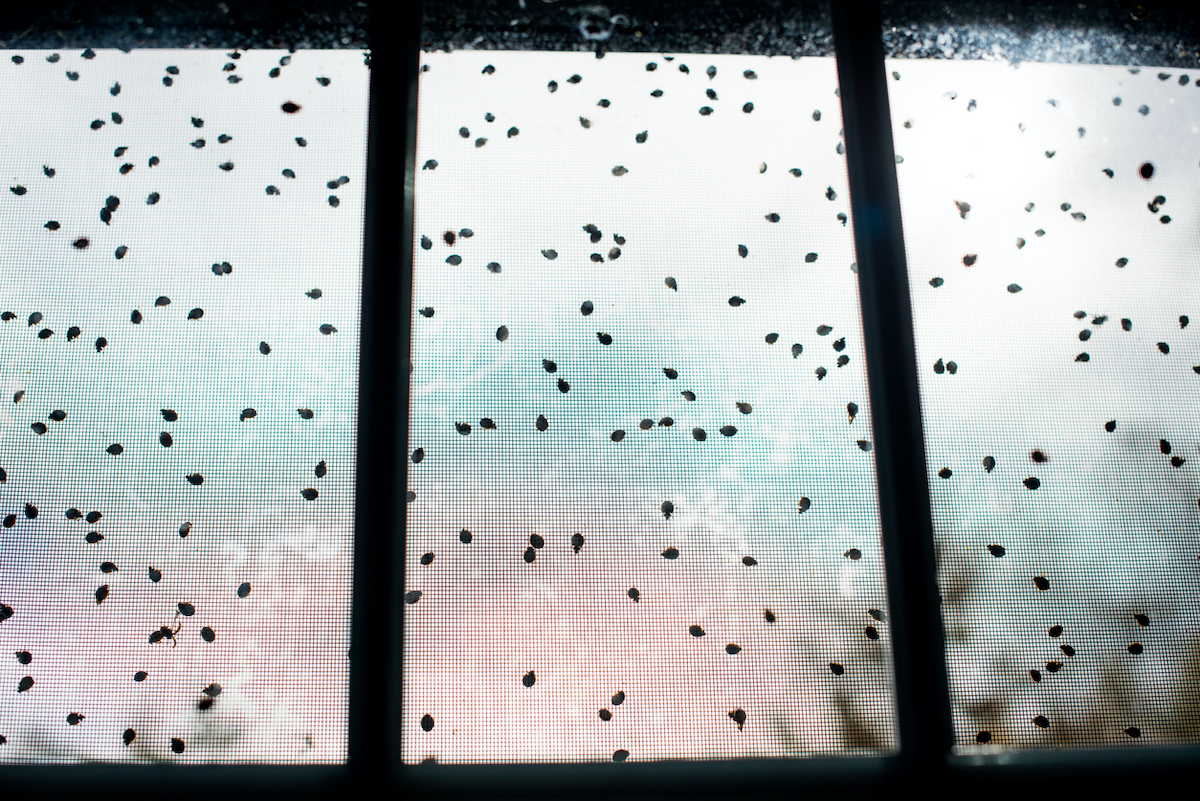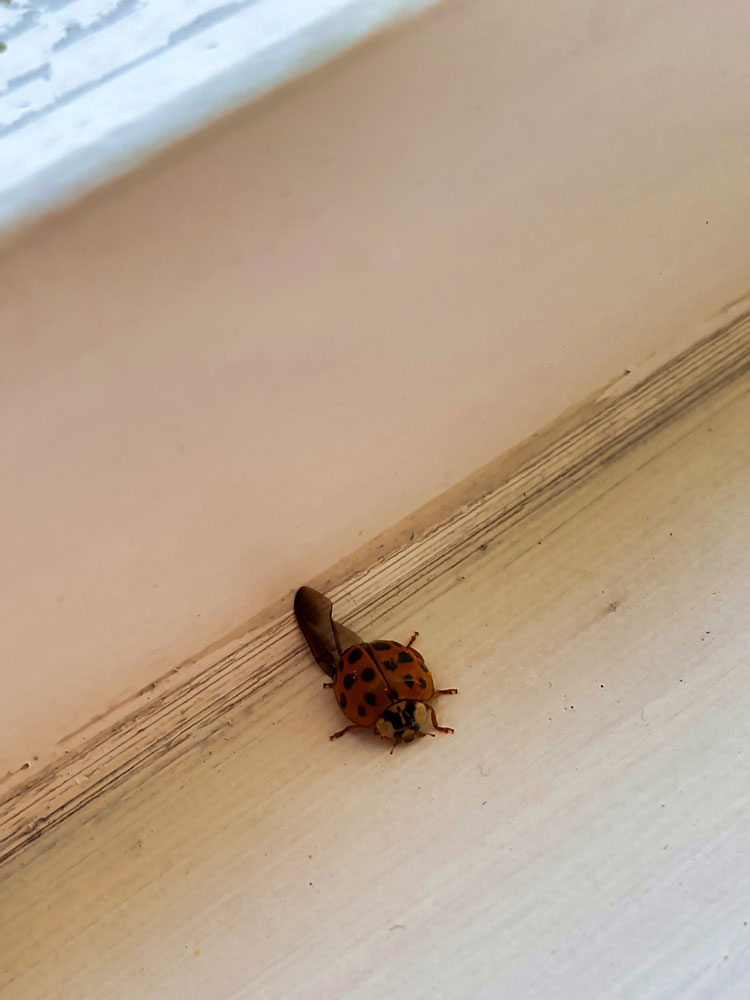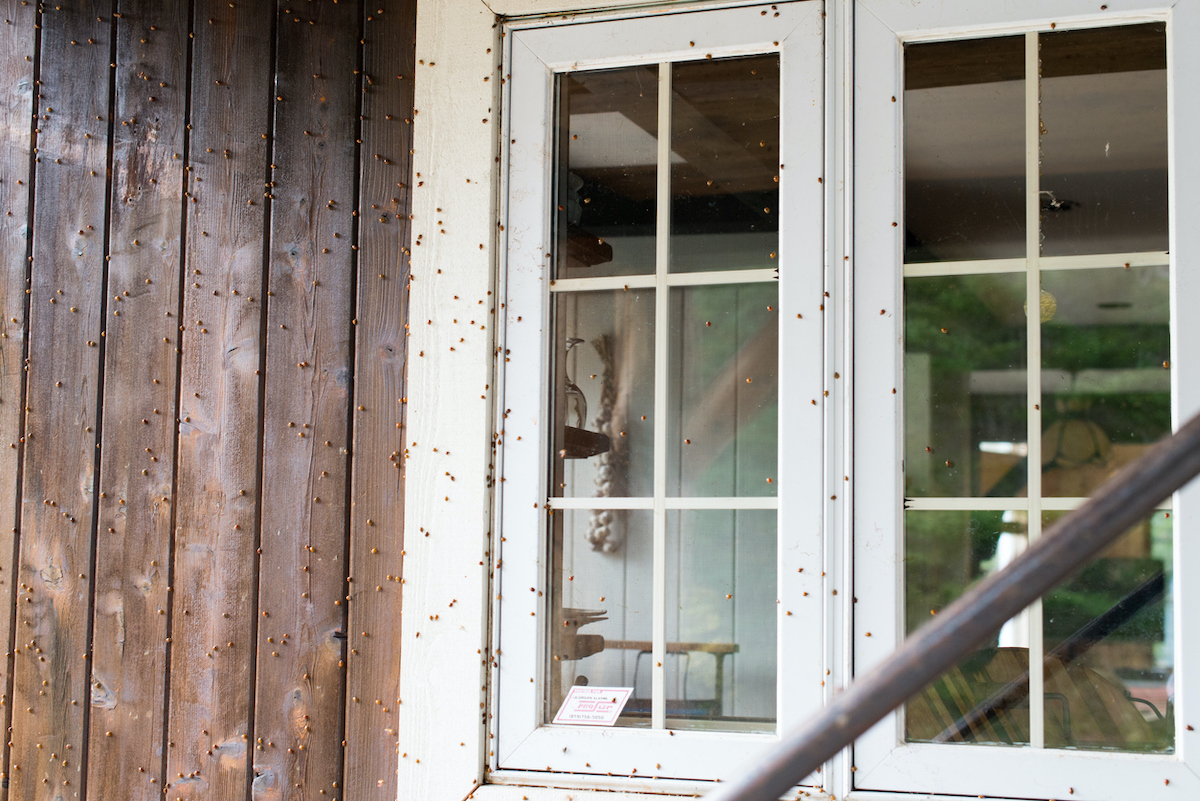

We may earn revenue from the products available on this page and participate in affiliate programs. Learn More ›
A healthy outdoor ladybug population is a good thing. Gardeners appreciate their voracious appetite for the destructive likes of aphids and scale, while kids of all ages can’t resist counting the spots on their bright bodies.
Yet too many Coccinellidae—especially if they’ve made their way into your living space—is a sign of potential infestation. The little beetles generally enter homes to hibernate over the winter and can multiply by the thousands, ultimately emerging from the wall structure as an overwhelming nuisance. You may opt to hire one of the best pest control companies to take care of your ladybug infestation—well-known companies such as Orkin and Terminix can help you rid your property of these pesky bugs. So don’t be lulled by their cuteness! Debug your place with these techniques for how to get rid of ladybugs.
Why are There so Many Ladybugs in My House?

Lady bugs, often referred to as lady beetles, instinctively gather together during the fall and search out safe, warm places to hibernate in masses. A hollow log, a pile of rocks, a cozy building—such as your house—are common winter shelters for ladybugs.
Once they find a suitable home for hibernation, the insects secrete a pheromone that attracts more to the site. Hence, when you find one ladybug inside your house, you’ll likely find (many) more if you don’t act fast.
Banishing Lady Beetles from Your Home
Due diligence is required to send the pests packing. Remove the ones you see inside immediately with any or all of these effective methods.
Vacuum with vigilance.
Notice ladybugs in your domicile? Vacuum them up without delay, then dispose of the bag or empty it outside. You can avoid that messy chore, if you own a canister model with a hose, with this trick: Cut the foot section off an old sock and attach it to the end of the hose with a rubber band. Turn the vacuum on, and the fabric will enter the hose (but not the bag). As you suck up ladybugs, they’ll get caught in the sock attachment—then simply remove the sock and empty it outside.
Turn on a light trap.
If ladybugs have infested a dark area, like an attic, use a light trap. Purchase one for about $35 or DIY your own out of a plastic jug, a light bulb, and transparencies typically used for overhead projectors. Once trapped, release the ladybugs outdoors.
Get professional help.
If the pest problem is already severe, call a pest control pro to get rid of ladybugs. Over-the-counter insecticides aren’t recommended to control ladybug infestations, but exterminators know what to use and how to use it.
Keep your hands off.
Though ladybugs don’t bite or carry disease, you should avoid picking them up individually with your fingers, or even sweeping them into a dustpan. When stressed, ladybugs secrete their blood, a yellow, smelly substance that can stain skin, fabrics, and painted surfaces.

Preventing Ladybug Infestations
In fall, ladybugs look for warmth—and your house is an inviting prospect. They’ll enter through any hole, crack, or gap they can find. Keep ladybugs at bay with these preventive measures.
Fix screens.
Repair breaks or tears in all screens and don’t leave doors or windows without screens open.
Install weather stripping.
Gaps under doors make an easy entry point for ladybugs. Weather stripping on all doors is an excellent barrier (and it helps keep your energy bill down, too).
Seal gaps.
Apply silicone caulk to exterior cracks and crevices, in any gaps in your siding, and around window frames, door frames, and utility pipes. Ladybugs can also enter through cracks in mortar, so if your home is of brick construction, check the pointing and repair with mortar or cement where necessary.
Surround your home with mums.
Mums are known for their colorful fall flowers and pest control super powers. Plant several mums around your home’s exterior, or add bulbs to containers near doors or other points of entry to deter ladybugs.
Use natural repellents.

Lavender, citrus, and citronella oils are effective at removing the pheromones that ladybugs leave behind. Add a few drops to your natural cleaning solution and wipe down any surfaces inside or outside your home where you’ve spotted lady beetles to prevent more from gathering.
Try cloves or bay leaves.
Delicious to eat and lovely to smell, cloves and bay leaves are also effective insect repellents. Add these plants to your herb or container garden to keep ladybugs at bay during the growing season.

FAQs
Pest-deterring plants are a great option for keeping ladybugs away from your home. Mums, cloves, and bay laurel are excellent choices. You can also remove ladybug pheromone trails using citrus or lavender essential oils in your cleaning solution to prevent future infestations.
If you find ladybugs inside your home, a vacuum is an effective tool for catching and releasing them back outdoors safely. To keep the task neat and tidy, attach a sock to the end of your vacuum hose using a rubber band. The sock will catch the insects like a filter, so you can easily drop them off outside.
Lady beetles are great garden guardians, gobbling up destructive plant pests such as aphids at a rapid rate. But when the weather turns cold, they seek out a warm shelter for hibernating—often a house. If you don’t quickly remove ladybugs and wipe away the pheromone trails they leave behind, more ladybugs will come and you’ve got an infestation on your hands.
Final Thoughts
Though helpful in the garden, as soon as ladybugs make their way inside your home they can become a nuisance. If you’re facing a ladybug infestation this fall, first catch and release them safely; then follow the instructions above to remove their pheromone trails and seal up any gaps and cracks around your home’s exterior to prevent them from entering again.
